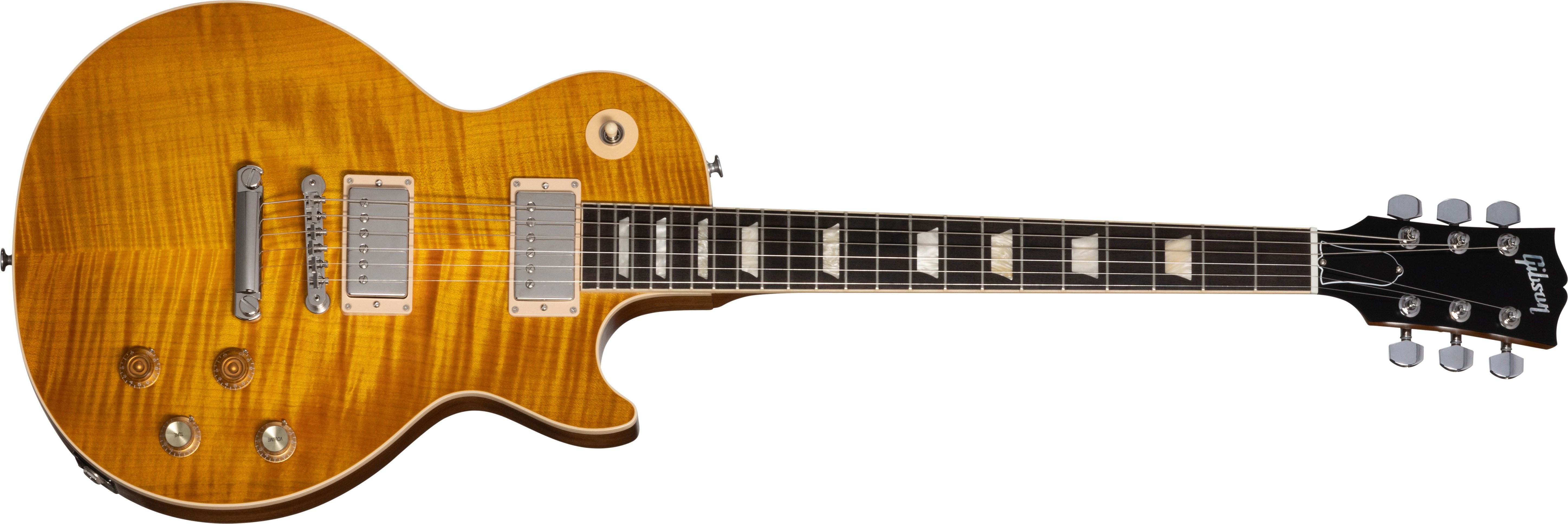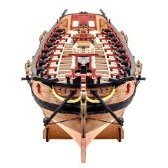-
Posts
6,087 -
Joined
-
Last visited
Content Type
Profiles
Forums
Gallery
Events
Posts posted by James H
-
-
-
-
STAGE 62: FITTING THE KNEE CAP AND KNEE JOINT
Another ratchet disc is installed, and along with the knee cap that's assembled with CA, both assemblies now fit to the one in the previous stage.
The knee is now fitted to the leg. A hex key is used to tighten the joint. This can later be loosened so the model can be specifically posed.
-
Pack 7
Pack 7 is finally done, and the T-800 is definitely growing in stature, even if he still doesn't have a leg to stand on. 😆
I am a little wary of now just picking it up via the chest cage, so grab by the pelvis now too. I don't want to put too much strain in one area.
- lmagna, popeye the sailor, mtaylor and 4 others
-
 7
7
-
2 minutes ago, captain_hook said:
I‘m going to a endocrine surgery tomorrow, so I will be off modeling for some days but hopefully will continue the build before Christmas.
Hope all goes well. Kidneys can be tricky things at times.
- captain_hook and Canute
-
 2
2
-
-
Chris has just asked me to say that his website is just migrating to a new server and it's currently offline.
Told it won't be too long now, so hold tight!
- JeffT, Rik Thistle, Ryland Craze and 5 others
-
 6
6
-
 2
2
-
-
-
-
STAGE 90: REAR LIGHTS, LED WIRES, GAS CAP, GAS PIPE, CABLE HOLDERS
Before I can start the wiring, the gas cap and gas cap base are fastened together using the small hinge and shortest small screws. This is then pushed into position and secured with a screw. The gas pipe holder is then also fastened into position, using screws from the outside rear.
The right rear light is pushed into position...
...and the rear right LED strip popped into place. I did find that before I could fit the light holder, that I needed to clip down the LED tails on the soldered joints as they protruded a little too far and stopped the holder fitting snugly.
With the holder in place, the cable is run in its channel and the cable clips used to hold it down. Again, a spot of CA was used to make sure these didn't eventually come loose when everything is finally assembled.
Things really are getting close to finish now. Here's where Pack 11 leaves us.
One more to go. I'm really hoping I see that pack before year end!
- GrandpaPhil, mtaylor, lmagna and 7 others
-
 10
10
-
STAGE 89: LOWER REAR BODY SECTION, TRUNK HINGES AND BRACKETS
The lower rear body part is now offered up to the rear of the main body and secured with six screws.
Both trunk hinges are fitted to the lid and the trunk led fitted to the main body, using the hinge brackets to hold in position. These are metal, so no chance of them being bent with any force.
- Canute, mtaylor, GrandpaPhil and 6 others
-
 9
9
-
-
STAGE 87: CENTER LIGHT BRACKET, HORNS, HOOD PINS, FOG LIGHT LENSES, LED SYSTEM, WIRE HOLDERS
The centre light bracket and holds are fastened to the front bracket. The hood pins are now pushed into place and the hood closed to ensure they located through the holes in the forward hood. I found the hood would then snag them and pull them out again, so I used a little CA to fasten the pins.
Now the headlights can be wired up, with wire 07 to the left, and 08 to the right. A cable tidy helps hold the wires in place when installed.
Some white glue (PVA) is used to fit the fit lights. I didn't use CA here as it can fog clear plastic.
The front is then offered up to the main body and screwed into position, making sure the headlight cables fit neatly through the holes in the front bracket. The cables are then run through the. body channels and held into position with wire clips. I wasn't very confident that those clips wouldn't later come loose so I used a tiny spot of CA to hold them in place.
The hood pin plates are now pushed into position and the lanyards/Lynch pins attached.
-
STAGE 86: HOOD HINGES
The hood hinges are now fitted to the hood. There are three different types of screw used for this, so care needs to be taken to get this right. There's quite a lot of tension in these when built, and it's a good idea not to keep operating these until fitted to the car as the slider won't cleanly operate until then.
Four screws now secure the hood to the main body. The hood needs to be inserted an an angle and then slid upwards at the rear to locate it. I had to move the hinged slightly to get this into position. I also noticed that the hood wasn't even to the fenders on each side, so the fenders needed to be slackened off and realigned to the hood.
- marktiedens, GrandpaPhil, Egilman and 6 others
-
 9
9
-
STAGE 85: HOOD, FRONT GRILLE, HIGH-BEAM HEADLIGHTS
To attach the Shelby logo to the front grille, two little tabs need to be bent inwards. These then snag onto the badge locating pins, holding it in place.
The other tags now need to be bent inwards, fully. The grille can then be fitted to the grille surround, and the tags then bent backwards to lock the grille into its surround. The surround is then screwed to the front Cobra assembly.
The next thing to fit are the headlights which just push into the grille surround from the front. The screw position needs to be pointing upwards so they are angled correctly.
- Egilman, Canute, popeye the sailor and 5 others
-
 8
8
-
- popeye the sailor, JeffT, Egilman and 5 others
-
 8
8
-
Pack 11 - almost there!
By far the LARGEST box to yet arrive from Agora, but hardly surprising when you consider it contains the GT500's main body. This is also a heavy box too as the largest components are metal, such as the body, hood and trunk etc (bonnet and boot, to us Brits!). There's no worry about this arriving in one piece either as the main body is contained inside a secondary bod, packed into dense polystyrene. The other packs are sat on top of this, with some of them now being blister packs again, and not just sleeves. Here's how things look when it arrives:
STAGE 83 : MAIN BODY SECTION STAGE 84: UPPER & LOWER SIDE SCOOPS
This one is quite simple. Before any work started, I used some protective foam to cover the paint stripes as they can be easily damaged when working. The model was also laid on a bed of bubble wrap for extra insurance.
The fender assembly is now fastened to the main body by four screws.
-
13 minutes ago, yvesvidal said:
These Agora kits are nothing more than glorified Meccano/Erector for wealthy wanna-be modelers.
When the only tool you need is a little Phillips screwdriver, I do not believe you can talk about modeling.
No pain, no gain as they say in the good old USA.
However James, I understand your role in creating the assembly guide/manual that will help the future Agora purchasers.
Yves
I'm not creating the manuals for these guys. I'm doing an abridged build for a magazine. I just thought I'd share the work here.
Remember, not all projects are 'modelling'
 I certainly didn't describe it as such.
I certainly didn't describe it as such.
- Egilman, Ryland Craze, chris watton and 6 others
-
 9
9
-
Welcome to MSW!
Whereabouts in Scotland are you? Part of my family came from Midlothian (Bonnyrigg).
- mtaylor and Old Collingwood
-
 2
2
-
8 hours ago, popeye the sailor said:
either way, your going to have to scroll......so what's the difference? excellent looking kit........big change from depending on cement. how much does the kit go for?
-
4 hours ago, popeye the sailor said:
this is so cool James........I had a look at the site earlier this evening. I didn't see a price list though.......this must be a part work kit.
It is monthly. https://www.agoramodels.com/terminator-t-800/#buy-now
-
You're coming along with that nicely and quite quickly.
A tip for sanding the hull:
Use the pear sheet which had the bow pattern parts, and use the empty shape to cut some broad masking tape to the correct curvature and apply to the bow patterns. When you sand the bow, you can then protect the engraving on those areas.
- Glenn-UK and chris watton
-
 1
1
-
 1
1
-
5 minutes ago, Egilman said:
An excellent set of online directions my friend, one suggestion, break it up into smaller parcels to reduce the scrolling, that would make it much easier to read.....
Beautiful work....
You're right! I will do that for future instalments. I just copied/pasted these from their original source.
- Canute, Old Collingwood, mtaylor and 2 others
-
 5
5









































































T-800 'Terminator' endoskeleton ny James H - Agora Models - 1:2 scale
in Non-ship/categorised builds
Posted
STAGE 65: ADDING ANOTHER PART TO THE LOWER RIGHT LEG
Another piston is fitted in the same way as the previous.
The lower leg outer casing is now fitted. This also has a keyed system that stops it being incorrectly placed.
The shin is now fitted. A few spots of CA are needed at the top and bottom, and once in position, a screw fastens it to the stationary piston.